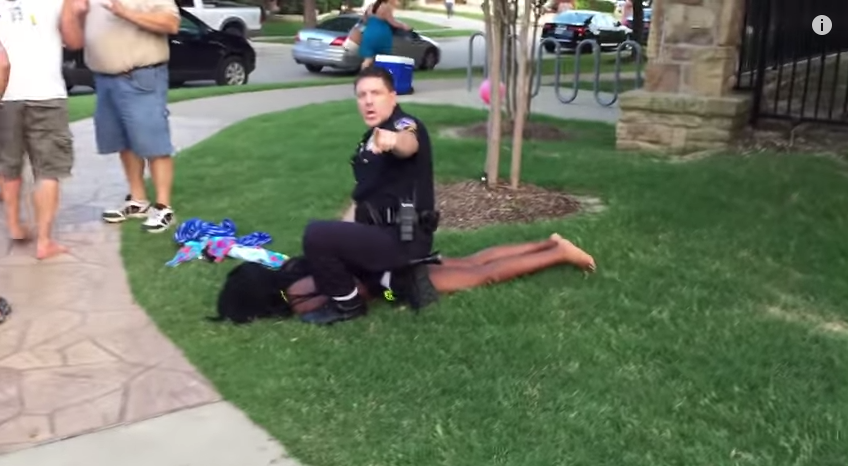Who Gets To Hang Out At The Pool?

*We might make the mistake of not seeing the events in McKinney, Texas, in their historic context.[tweet_dis] The segregation of public pools has a long history in the U.S.[/tweet_dis] In 1957 Marshall, Texas, sold its recreational facilities. The new owners opened them as private, “whites only” pools. That’s just one of the many incidents recorded. Even the Supreme Court ruled that public pools should remain segregated because they were considered more “sensitive” than schools. We thought we were past that darkness. VL
![]() By Gene Demby, Code Switch
By Gene Demby, Code Switch
It was an ugly scene. A fight broke out at a pool party in a McKinney, Texas, subdivision on Friday, allegedly after a white resident told a group of black teenagers to “go back to their Section 8 housing.” Local cops show up in force. At some point, a bystander pulls out his cellphone and begins videotaping. He catches one of the officers slamming a swimsuit-clad 15-year-old girl to the ground and pointing his gun at unarmed teen boys who appeared to rush to her defense.
The video has gone viral, the officer who drew his gun has been placed on administrative leave, and details about exactly what happened Friday afternoon are still coming out. But as others have noted, this story brings up a decades-old American drama around race and swimming pools, featuring racial gatekeepers who opted to privatize public spaces rather than integrate them. It’s worth revisiting that history as we try to make sense of McKinney.
Jeff Wiltse, the author of the book Contested Waters, told NPR in 2007 that the early 20th century saw a boom in public swimming pools, which were originally intended for bathing and hygiene. These new municipal pools were enormously popular, but they were separated by gender over fears of sexual impropriety. And like so many other public resources, these new pools were concentrated in white neighborhoods.
This story brings up a decades-old American drama around race and swimming pools.
“There has always been fear, in terms of using swimming pools, about being exposed to the dirt and the disease of other swimmers,” Wiltse said. “And back during the 1920s and 1930s, and … continuing on even further up from there, there were racist assumptions that black Americans were dirtier than whites, that they were more likely to be infected by communicable diseases.” (There’s a famous story about the time Sammy Davis Jr. swam in a whites-only pool in Las Vegas, prompting the manager to immediately drain it afterward.)
[pullquote]Even after Brown v. Board of Education ostensibly desegregated America’s schools in 1955, a federal judge sided with Baltimore’s pro-segregation argument that pools “were more sensitive than schools.” (That decision was later overturned.)[/pullquote]But those big public pools eventually became mixed-gender pools, unleashing even deeper-seated fears about what might happen if black men and white women went swimming together. “Whites in many cases literally beat blacks out of the water at gender-integrated pools because they would not permit black men to interact with white women at such intimate public spaces,” Wiltse writes. “Thus, municipal pools in the North continued to be intensely contested after 1920, but the lines of social division shifted from class and gender to race.”
Campaigns by civil rights groups like the NAACP to integrate public pools often turned very, very ugly. “Groups for and against segregation threw rocks and tomatoes at one another, swung bats and fists, and even stabbed and shot at each other,” Wiltse wrote.
Click HERE to read the full story.
[Screenshot courtesy of Brandon Brooks/YouTube]

